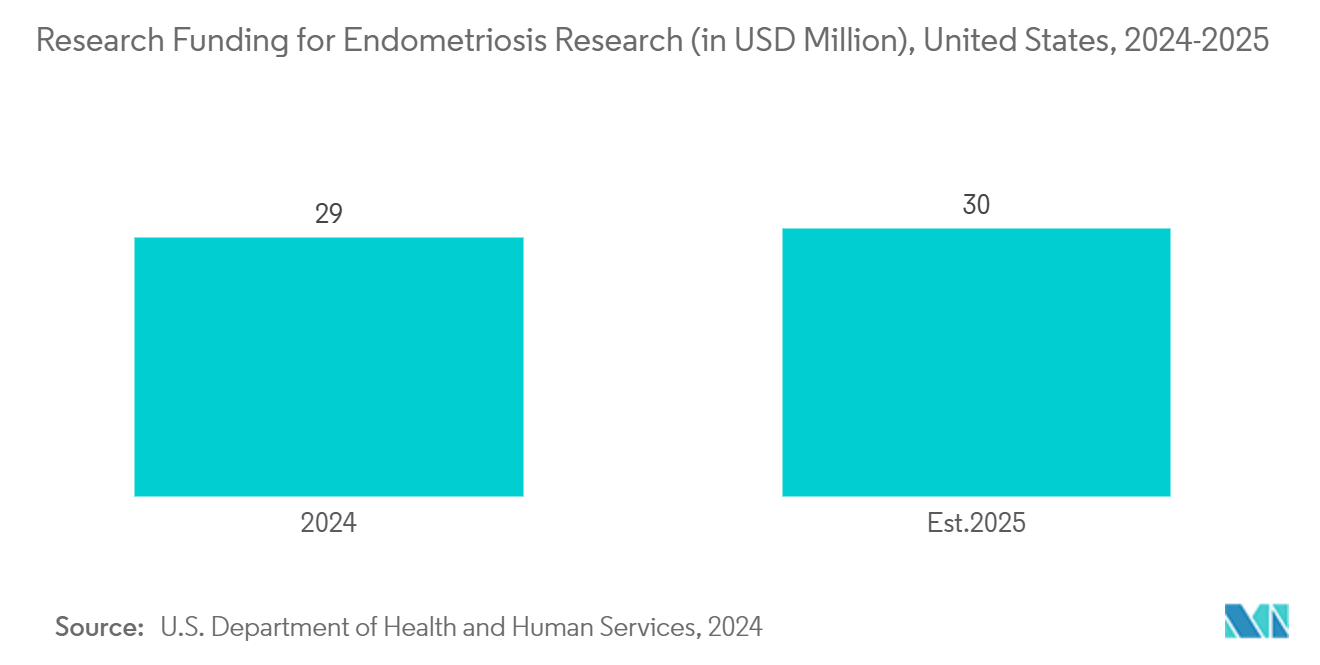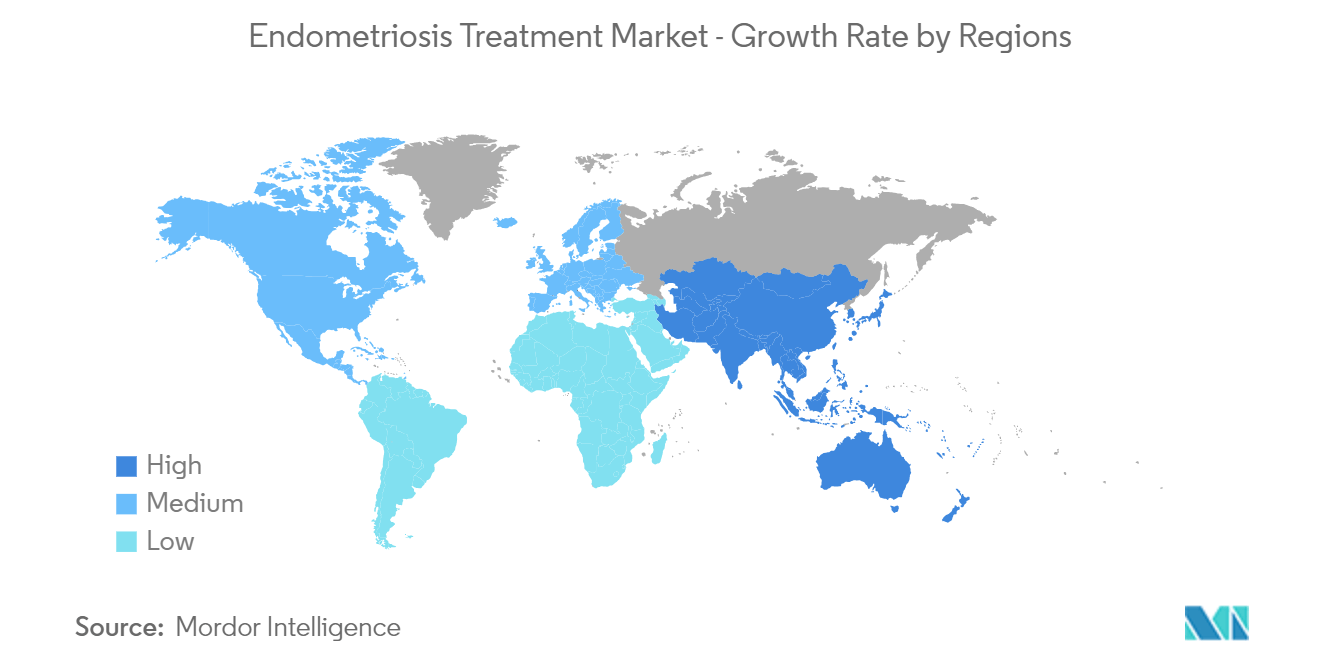Market Trends of Global Endometriosis Treatment Industry
The Pain Medication Segment is Expected to Witness Significant Growth Over the Forecast Period
The increasing female population is one of the major factors fueling the demand for pain medications. Endometriosis is associated with painful symptoms such as chronic pelvic pain, dysmenorrhea and dyspareunia, infertility, and psychological suffering. Pain medications can treat the painful symptoms of the disease and reduce its negative impact on quality of life and mental health. For instance, as per the December 2022 data of WebMD LLC, pain medications like nonsteroidal anti-inflammatory drugs and gonadotropin-releasing hormone (GnRH) analogs possess an excellent ability to manage severe pain associated with endometriosis.
The pain medication is cost-effective, safe, and causes very limited side effects. Nonsteroidal anti-inflammatory drugs (NSAIDs) are primarily used in the management of pain caused by endometriosis. Over-the-counter NSAIDs include aspirin, ibuprofen, and naproxen. NSAIDs block the development of prostaglandins, a type of biological compound produced in the body. Elevated prostaglandins cause swelling, pain, and inflammation that many women with endometriosis experience during their periods.
Moreover, strategic collaborations among key players operating in the market are projected to support the market’s growth. For instance, in February 2022, ObsEva SA formed a strategic licensing agreement with Theramex to support the commercialization and market introduction of linzagolix across markets outside the United States, Canada, and Asia. Linzagolix is in the development phase as a potential treatment for endometriosis-associated pain, and ObsEva recently published positive topline results for its first Phase 3 trial (EDELWEISS 3) for this indication.
The increased efforts by market participants and government institutions to develop and commercialize effective pain management options for endometriosis are also projected to propel the segment. For instance, in March 2023, UK researchers received a grant of USD 317,500 to investigate the role of dichloroacetate in pain associated with endometriosis. If approved, it can be an effective treatment option as a non-hormonal treatment for endometriosis. Thus, the increased research efforts to investigate novel pain management therapies for endometriosis are projected to support the segment’s growth over the coming years.
Thus, the increased role of pain management medicines in endometriosis treatment, several collaborations undertaken by market participants, and increased research efforts are anticipated to bolster the segment’s expansion in the coming years.

North America is Expected to Witness Significant Growth Opportunities in the Endometriosis Treatment Market
North America is expected to witness significant growth opportunities over the forecast period due to the availability of technologically advanced products, the rising prevalence of endometriosis in the region, and increasing awareness regarding endometriosis. For instance, according to the January 2024 data from Johns Hopkins University, endometriosis is a common condition across the United States. It affects an estimated 2-10% of American women between the ages of 25 and 40. Thus, the increasing burden of this condition across the region is projected to augment market growth over the coming years.
The new product launches and the presence of key players in the United States are driving the endometriosis treatment market in the country. For instance, in August 2022, the US Food and Drug Administration (FDA) approved Myovant Sciences and Pfizer's MYFEMBREE to manage moderate to severe pain associated with endometriosis in pre-menopausal women. The drug offers a once-daily effective treatment option for the management of pain, with a treatment duration of up to 24 months.
The surging burden of conditions like endometriosis and menstrual disorders across North America and the severe pain associated with these diseases pushed researchers to investigate possible remedies for improving the condition. For instance, in September 2023, researchers from the University of Arizona’s College of Medicine and the Comprehensive Center for Pain and Addiction collaborated to investigate the link between prolactin and endometriosis. This study hopes to bring a lot of findings associated with endometriosis pain and its correlation with different hormones. Thus, such studies are expected to strengthen the understanding of the role of various hormones in endometriosis to develop targeted hormonal therapies, thereby supporting market growth.
Thus, the increasing burden of endometriosis in the region, a surge in research studies for endometriosis, and growing product approvals are projected to support the regional market’s growth over the forecast period.
However, despite the high burden of endometriosis, research funding for this condition is very limited, which is hampering the commercialization and development of new therapeutics. For instance, according to the May 2022 update from the National Institute of Health, the research for endometriosis has been declining, and such instances are projected to hamper market expansion over the coming years.


